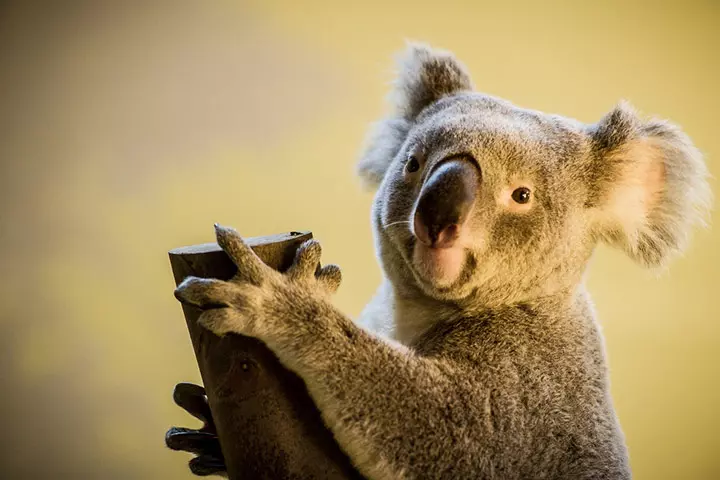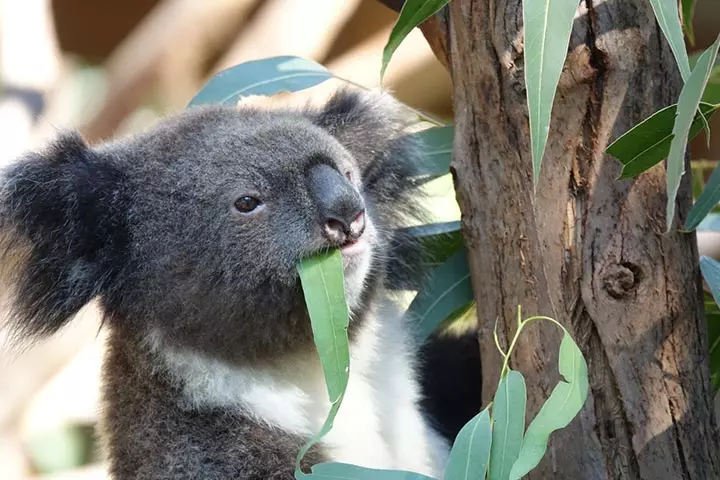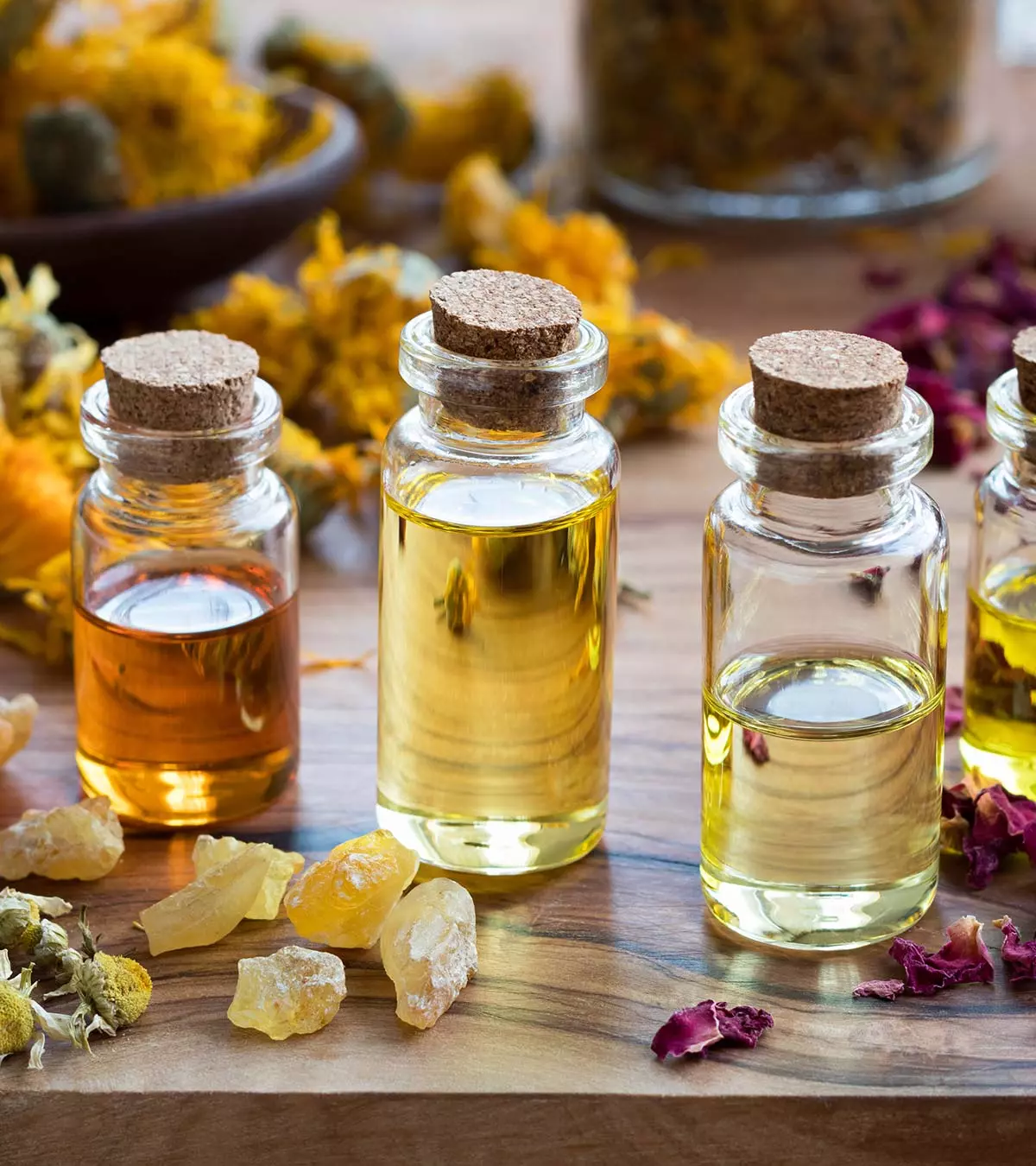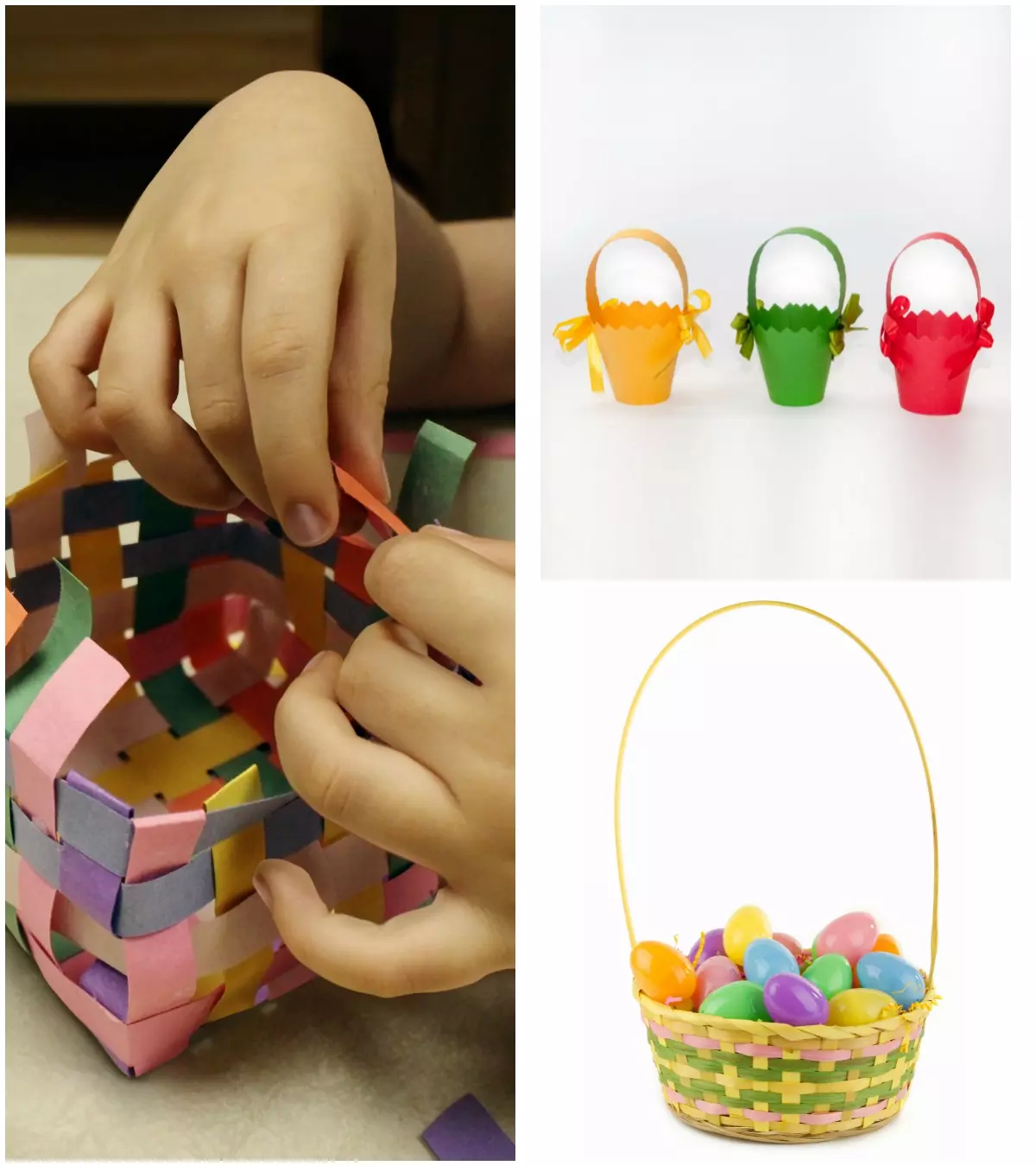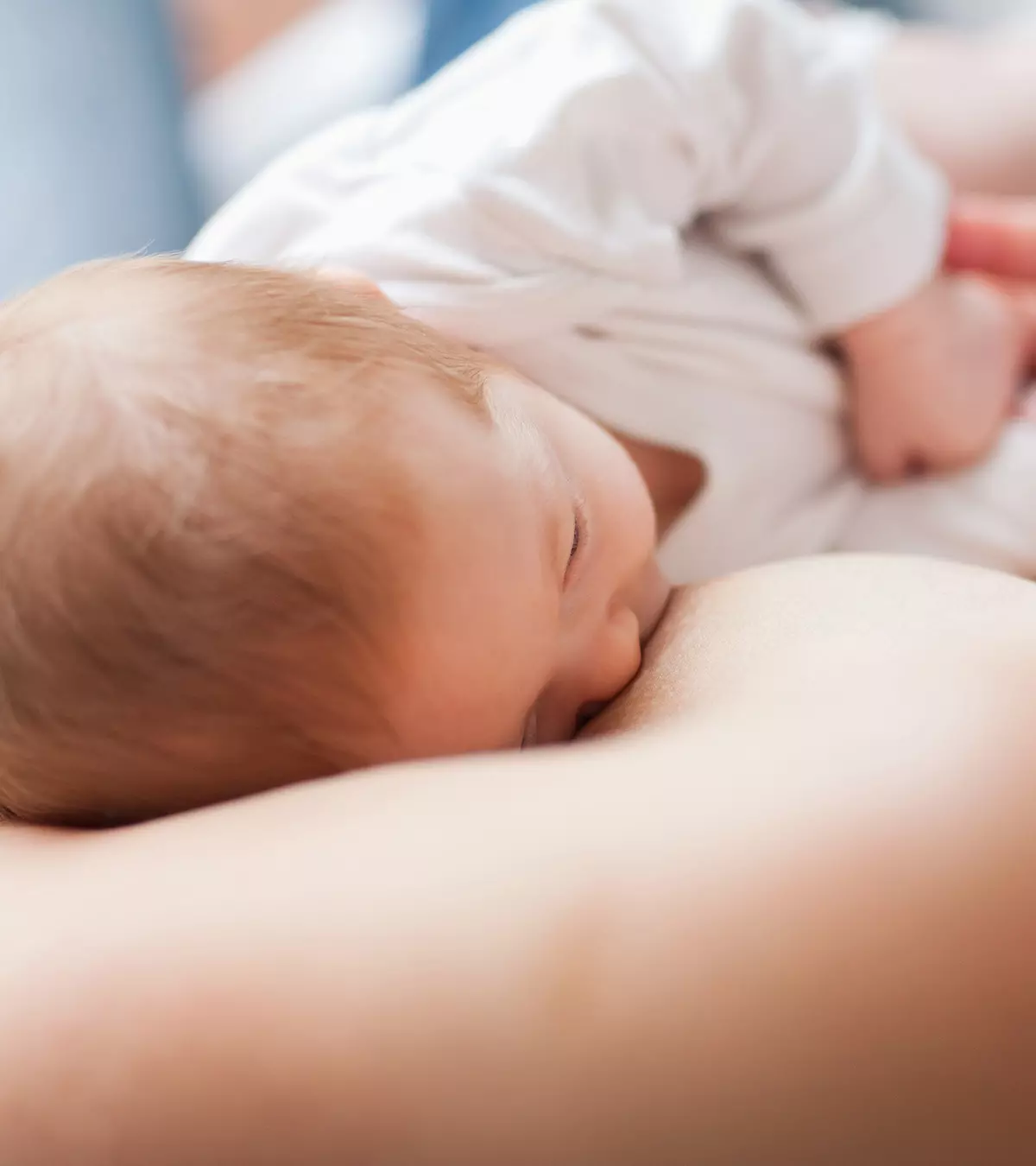

Image: Shutterstock
The koala is an Australian marsupial that lives on trees. Interestingly, they are called “koala bears” but are not bears. Learn more about fascinating koala facts for kids by reading this post. The koala is a furry and cuddly herbivore and can be mostly seen clinging to the trees with sharp claws like cats. Its cuteness and calm nature make it everyone’s favorite. Read on for more interesting facts about this fuzzy creature.
Quick Facts About Koala
| Scientific name: | Phascolarctos cinereus |
| Size: | 24-33 inches (60-85 centimeters) |
| Weight: | 20 pounds (almost 10 kilograms) |
| Lifespan: | 10-15 years in wild, 18-20 years in captivity |
| IUCN conservation status: | Vulnerable |
Name & taxonomy
Image: Shutterstock
- The origins of the name koala come from Gula, the Aboriginal (native Australian) word for the animal.
- Early European settlers in Australia thought the animal resembled a bear and began calling it the ‘Koala bear’. But koalas are not bears and are not related to them either.
- Koalas are the only living members of the biological family Phascolarctidae.
- The animal belongs to the biological infraclass called Marsupialia and is related to other marsupials, many of which, such as the kangaroo, also live in Australia.
Lifespan
- A koala can live up to 10-15 years in the wild.
- Koalas in captivity may live up to 18-20 years.
Appearance
Image: Shutterstock
- Koalas have a furry appearance with a prominent black nose and furry ears. If you look closely, you’ll figure out that the koalas do not have tails!
- The average size of a full-grown koala is 24-33in (60-85cm ). The average weight of a full-grown koala is around 20oz (almost 10kg).
- Male koalas are almost 50% larger than females. The males also have chest glands, which are visible as small hairless patches on their chest.
- There are three subspecies of the koala, each found in three different parts of Australia. They are the Queensland koala, New South Wales koala, and Victorian koala. The Victorian koala is the largest and the Queensland koala the smallest. Victorian koalas have thicker, brown-colored fur.
Habits & lifestyle
Image: Shutterstock
- The koalas spend most of their waking hours eating eucalyptus leaves. Since a diet of leaves provides very little energy, koalas spend up to 18 hours a day asleep to conserve energy.
- The koalas even smell of eucalyptus, since they consume plenty of eucalyptus leaves every day! Some say their odor is similar to that of a cough drop containing eucalyptus oil.
- In hot weather, koalas cling to the tree trunks while sleeping. It helps them cool off quickly.
- Koalas are asocial animals. The only group of koalas you will see is that of a female koala and her young ones. Social interaction is very minimal and will only occur if the territories of two koalas overlap. Male koalas may wander in search of a female mate, but they leave after mating. Only females raise the young ones.
Reproduction
Image: Shutterstock
- A baby koala is called a joey, the same name as that of a baby kangaroo.
- The gestation period (pregnancy) in a koala is about 33 to 35 days.
- Koalas usually give birth to only one joey, and twins in rare cases.
- Koalas are marsupials and produce a tiny, underdeveloped young one. Immediately after birth, the joey crawls into the mother’s pouch on her belly, where it feeds on milk and stays for six months.
- A female koala’s pouch opens to the bottom, unlike a kangaroo’s pouch that opens on the top. The koala shares the bottom-opening pouch attribute with a wombat, its closest relative.
- Joeys begin stepping out of the pouch after six months. Initially, they only peek out of the pouch and then ride on their mother’s back. Joeys continue to feed on mother’s milk until the age of 12 months.
Diet
Image: Shutterstock
- Did you know? The koalas only feed on the eucalyptus plant, with the leaves being the staple diet of the animal. Koalas mostly eat during the night.
- A fully grown koala may eat up to one kilogram of eucalyptus leaves in a day.
- A koala gets all its water from its diet of eucalyptus leaves. Koalas barely drink water and may search for water on the forest floor or within the hollows of a tree only in hot weather.
- The koala’s body has several adaptations to suit its eucalyptus-leaf diet. Sharp claws allow it to grab the branches that are at a distance and also hold to the tree securely. Koalas also have a longer intestine to allow maximum digestion of the leaves through fermentation by the gut bacteria.
Habitat & endangerment
Image: Shutterstock
- Koalas are indigenous to Australia and are not found anywhere else in the world. The animal resides only on the eastern end of the continent.
- Koalas need a large territory of about 100 trees. Australia’s forests are shrinking rapidly and considering that the country is an island, there is limited space for koalas to spread out. It puts the animal at risk of habitat loss.
- The native Aboriginal population of Australia regularly hunted the koalas for food and fur. However, it seldom caused any decline in the koala population.
- European settlement of Australia led to widespread hunting of the koalas. The early 20th century saw the killing of nearly 800,000 koalas, which reduced the koala population drastically.
- Koala conservation started in the 1930s. Today, the koala is extensively protected by several government programs that aim at maintaining a healthy population of the species.
- Loss of habitat is the leading threat for koalas. More forests are being cleared today for agriculture and urbanization causing koalas to venture into urban zones. Koalas are vulnerable to vehicle collisions on highways and attacks from domestic animals.
- Australia has lost almost 80% of the koala habitat. It is causing increased stress on the animal, which in turn seems to increase the incidence of a bacterial, sexually-transmitted infection called chlamydia among koalas.
- The estimated number of koalas in the wild is less than 90,000, and the numbers are fast decreasing.
- International Union for Conservation of Nature (IUCN) rated the animal ‘vulnerable’ in the year 2016. Koala conservation activists are striving to get the rating changed to ‘critically endangered’ to get more attention to the plight of the animal and also help improve its chances of long-term survival.
Koala in society & culture
Image: Shutterstock
- Koalas can often be found in captivity, especially in zoos across Australia. Human caretakers raise orphaned baby koalas in zoos. Koalas are still wild animals and cannot be domesticated.
- The endearing looks of koalas make them very popular among children. Koalas have been portrayed as characters in several children stories written by Australian writers. This image of an adorable animal has also helped garner global attention and support towards conservation of the koala in Australia.
Frequently Asked Questions
1. Do koalas have two thumbs?
Yes. Koalas have two thumbs that help them to grip the branches firmly and move from one tree to another (1).
2. Can koalas swim?
Yes, koalas can swim, but they will drown if they do not find something to hold on to and climb out of the water (2).
3. Do koalas have fingerprints?
Yes, koalas are among the few animals who have fingerprints like humans. These fingerprints are unique to each koala (1).
Koalas are usually peaceful and timid, and they rarely cause difficulties for humans. But, the rising human population and territorial expansion have resulted in a reduction in suitable habitats for these marsupials. Fortunately, their situation has not deteriorated further. To safeguard the koala, all that is required is to respect the animal’s native habitat and to be aware of them in urban areas. Knowing these koala facts for kids will pique their interest in these cute, bear-like animals and urge them to participate actively in their conservation efforts.
Have you ever seen a koala in the wild or captivity? Tell us in the comment section below.
References
- Koala-ty facts about koalas.
https://www.clevelandzoosociety.org/z/2020/04/07/koala-ty-facts-about-koalas - Koalas.
https://www.wildcare.org.au/Documents/koalas/Koala%20Facts.pdf
Community Experiences
Join the conversation and become a part of our nurturing community! Share your stories, experiences, and insights to connect with fellow parents.
Read full bio of Sravani Rebbapragada



